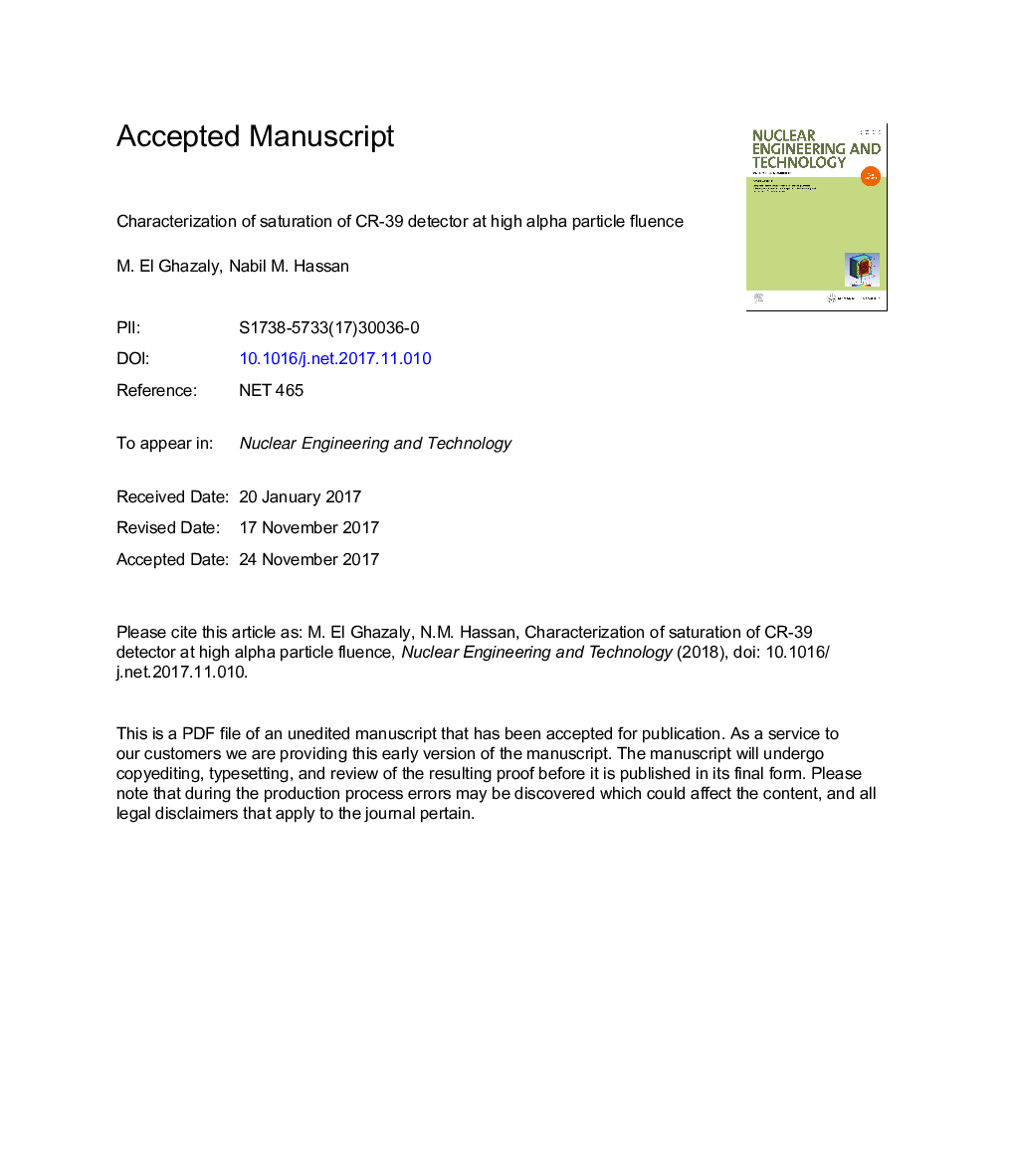| Article ID | Journal | Published Year | Pages | File Type |
|---|---|---|---|---|
| 8083785 | Nuclear Engineering and Technology | 2018 | 13 Pages |
Abstract
The occurrence of saturation in the CR-39 detector reduces and limits its detection dynamic range; nevertheless, this range could be extended using spectroscopic techniques and by measuring the net bulk rate of the saturated CR-39 detector surface. CR-39 detectors were irradiated by 1.5 MeV high alpha-particle fluence varying from 0.06 Ã 108 to 7.36 Ã 108 alphas/cm2 from Am-241 source; thereafter, they were etched in a 6.25N NaOH solution at a temperature of 70°C for different durations. Net bulk etch rate measurement of the 1.5 MeV alpha-irradiated CR-39 detector surface revealed that rate increases with increasing etching time and reaches its maximum value at the end of the alpha-particle range. It is also correlated with the alpha-particle fluence. The measurements of UV-Visible (UV-Vis) absorbance at 500 and 600 nm reveal that the absorbance is linearly correlated with the fluence of alpha particles at the etching times of 2 and 4 hour. For extended etching times of 6, 10, and 14.5 hour, the absorbance is saturated for fluence values of 4.05 Ã 108, 5.30 Ã 108, and 7.36 Ã 108 alphas/cm2. These new methods pave the way to extend the dynamic range of polymer-based solid state nuclear track detectors (SSNTDs) in measurement of high fluence of heavy ions as well as in radiation dosimetry.
Related Topics
Physical Sciences and Engineering
Energy
Nuclear Energy and Engineering
Authors
M. El Ghazaly, Nabil M. Hassan,
